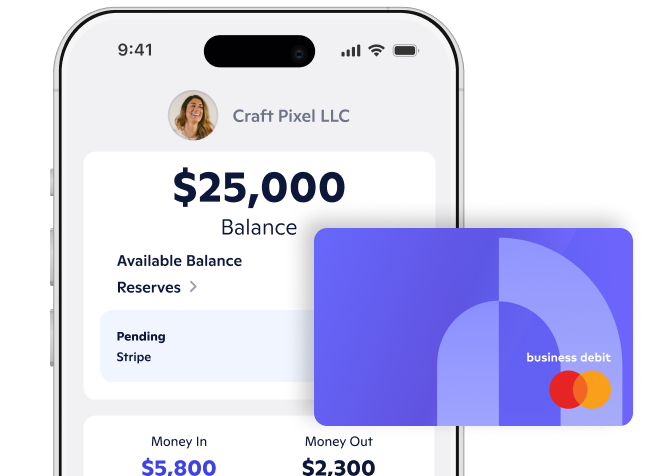
In the United States, small businesses employ roughly 61.7 million people—that’s almost half of all US employees! Small businesses are vital employers and, as a small business owner, you are likely to find yourself thinking about hiring as your business grows.
In this guide, we’ll break down all the steps to take when hiring employees for your business. This includes writing a great job description, screening and interviewing candidates, making offers, and onboarding advice.
Define your hiring needs
Before you can jump right into hiring, take a look at the state of your business and what you need an employee to contribute. Ask yourself:
- Where does your business need the most help right now?
- What tasks do you want to take off your own plate?
- Do you need someone with a specialized skill set or a jack-of-all trades?
- Will you have time and resources to train someone, or do you need someone experienced?
Once you determine what you’ll need from your employee, you can start to narrow down on the specifics:
Identify job responsibilities
Be extremely clear with expectations and job responsibilities from the start. According to a Gallup poll, more than half of U.S. employees are unsure of their expectations at work. This can lead to lack of engagement and poor performance over time.
Determine budget
Your budget will need to cover a competitive salary, benefits, and hiring costs. Hiring costs can include job posting fees, recruiters, compensation for travel, and even relocation fees. That’s why it can sometimes cost a company as much as $20,000 to hire and onboard a new employee.
Assess your company values
With company values becoming increasingly important to potential employees, you should be prepared to discuss those values and how this new role will fit into the bigger business vision. Make sure to assess whether candidates are aligned with your company mission statement.
Steps to take before hiring an employee
Every state is different when it comes to employment, so we recommend consulting an employment or legal advisor. Below is a general overview of what you’ll need to have in place before you begin the hiring process.
1. Get your EIN
Is this your first hire? Before you hire your first employee, you need to get your Employee Identification Number (EIN) so you can set up payroll.
Other important considerations:
- Check legal requirements per state, which range from setting up unemployment insurance accounts to disability payment requirements.
- Check with resources like the Small Business Administration to determine what other insurance coverage is required before you hire.
- Make sure you carry workers’ compensation insurance.
2. Write a great job description
When crafting a job description, avoid something generic like: “Seeking a marketing manager. Must have 10 years experience. Interested applicants please apply.” This doesn’t give interested candidates a good overview of your business, your expectations, or the specific skillsets necessary to succeed in the role.
Writing a thorough and eye-catching job description requires some time and effort, but it’s worth it if you want to attract the right candidates.
Some things to consider when it comes to the job description:
- Include your company values
- Don’t be vague about the role and its responsibilities – instead of writing something like “Seeking a marketing manager with 10 years of experience”, for example, you’d write “Seeking a marketing professional with extensive social media and email marketing experience. Familiarity with Hubspot and Sprout Social required. Experience using Google Sheets preferred. Must have 7-10 years of experience in a customer-focused marketing role.”
- Include salary range* (As of January 1, Colorado, California, Rhode Island and Washington require salary transparency in job descriptions. Check your local and state laws for the most updated information.)
- Include other benefits that will offered, like health insurance, time off, and retirement benefits
Sourcing potential candidates
On average, it takes about three to six weeks to hire a new employee. Here are some strategies for finding potential candidates.
Network, network, network
Networking is a great way to find direct candidates, as well as get information on where other business owners have found great employees. We suggest seeking out networking groups both locally and nationally to find groups that aligns closely with your industry and hiring needs.
Utilize job boards and social media
More than ever, candidates are looking to social media websites like LinkedIn, Twitter, and Facebook for a job. In fact, 73% of millennials used a social network to find their last position.
Employee referrals
Some companies offer referral bonuses ranging from $250 to $7,500 to their current employees as an incentive to refer those in their network. Think about ways you can motivate your employees to find more people just like them!
Work with a recruiting firm
The candidate search can take up a lot of your time. If you don’t have the bandwidth to run the hiring process yourself, get in touch with a reputable recruiting company. They source candidates all day, everyday. It may mean spending a little more money—it’s often 15-25% of the first year salary for the employee—but it will help take some of the load off your shoulders.
Screening and interviewing candidates
Once you have a few candidates lined up, you’ll want to move them through a hiring process as efficiently as possible. The average number of interviews for a typical hire is two to four.
Here is a general guide for how to interview candidates:
- Create a screening process: On average, a corporate job post attracts 250 resumes. Even if you’re not seeing that volume, having a repeatable process in place is imperative. If you don’t have a Human Resources team to sift manually through resumes, you could try an automatic resume software like CVViZ or Freshteam that can screen candidates for you.
- Conduct initial phone calls: This is a great way to screen candidates and doesn’t need to take more than 15-30 minutes.
- Hold in-person interviews: Come prepared with role-specific questions, not boilerplate ones. Also, keep in mind how many rounds of interviews you plan to schedule. Too many rounds can actually be counterproductive and you may miss out on top talent.
- Check references and conduct background checks: This should be the final piece of the interview puzzle, but is no less important.
Making a job offer
So, you found your ideal new employee. Here are the steps to take when making a job offer:
1. Determine salary and benefits
Check the market value for jobs in your city so you can offer a fair rate. New salary transparency laws are making it easier to evaluate the going compensation for comparable roles. Start by looking at what other employers are offering and then compare against your budget. We also recommend utilizing easily accessible resources like the U.S. Bureau of Labor Statistics or research done by third-parties like Payscale.
Remember to budget for the entire compensation amount, including:
- Health insurance
- Employer taxes
- Unemployment insurance
- Any other applicable costs
2. Offer the job and explain next steps
Every company is different, but in general, job offers should be in writing. If you aren’t sure where to start, utilize offer letter templates for guidance, like these from Forbes.
Your offer should include the following:
- Official title
- Salary
- Benefits
- Start date
- Office location
- Signature section
3. Be prepared to negotiate terms and conditions
The candidate may come back with a counteroffer, whether it be their salary, benefits, or equity (if applicable). Since 45% of candidates negotiate, plan your response in advance based on how much you have in your budget.
Onboarding and training
Onboarding and training will set the tone for your new hire’s success at your company. Studies have shown that 69% of employees who have a beneficial and efficient onboarding experience end up staying with their company for three years, so don’t skip this part!
Here are some of our recommendations for onboarding your new hire:
- Create a new hire paperwork checklist that includes the documents they need to bring on their first day. You will need their information to complete new hire reporting paperwork.
- Create a software setup checklist to remind yourself of the systems they will need to access.
- Provide an orientation that covers how the office operates, where things are, and who to go to for questions on key topics.
- Plan meet-and-greets with other employees and other important people to know, like contractors or clients.
- Create a 30/60/90 day plan for their first three months.
Don’t forget, retention is just as important as hiring. After all, you spent all that time, money, and energy to find them in the first place, so you want them to stick around. Here are some ways to continue supporting your employees after day 1:
- Offer comprehensive training
- Create a mentorship program
- Consistent quarterly check-ins and feedback loops
- Provide ongoing, structured opportunities for growth
Takeaways
As a small business, it can be quite overwhelming (and costly) to hire a new employee, but it’s also an exciting time for your company! Before you dive in, be sure to know exactly why you want to hire this employee and be clear about expectations from the very beginning. Take the time to attract the right people to your company and continually guide them through the onboarding process with structure and support. Not only will this ensure the success of your employees, but also your business overall.
Novo Platform Inc. strives to provide accurate information but cannot guarantee that this content is correct, complete, or up-to-date. This page is for informational purposes only and is not financial or legal advice nor an endorsement of any third-party products or services. All products and services are presented without warranty. Novo Platform Inc. does not provide any financial or legal advice, and you should consult your own financial, legal, or tax advisors.






